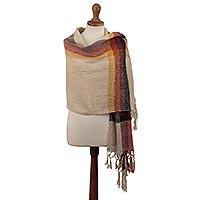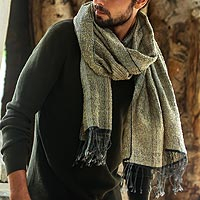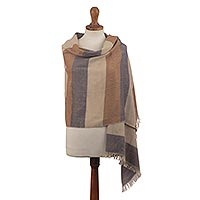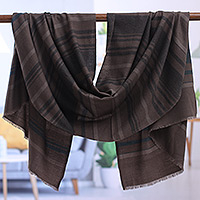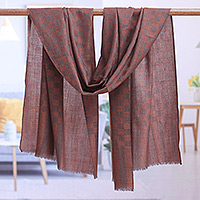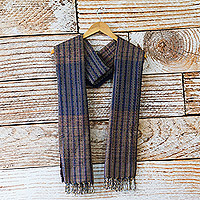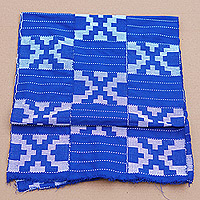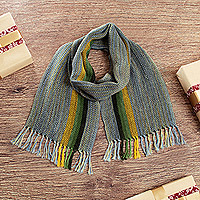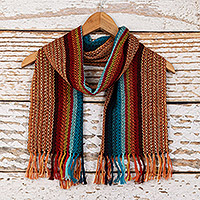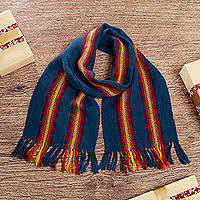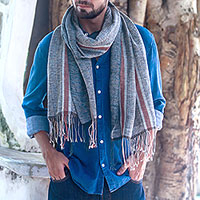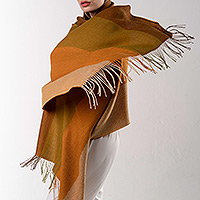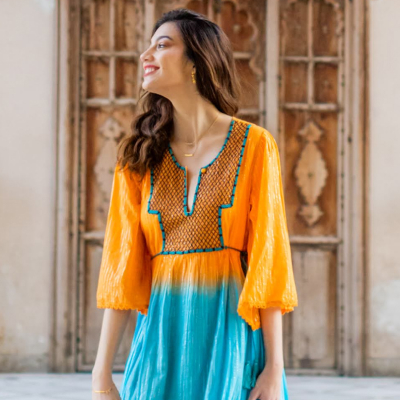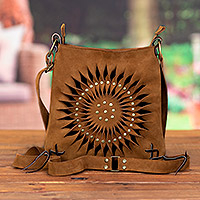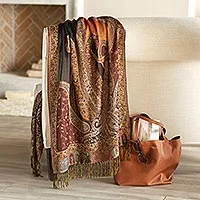Shawls for Men
(16 items)The Village Council
Your answers straight from the village experts
Hand-washing and dry cleaning are the most common ways to care for and clean shawls. Many of our alpaca shawls specifically indicate dry-cleaning or hand-washing with cold water. Because shawls are delicate, a garment bag is a good way to prevent damage. Avoid direct sunlight and high heat. As always, it is important to follow the care instructions specific to the fabric of your shawl.
The great thing about shawls is that they are versatile. One can find a shawl for every season. Warmth is often based on the tightness of the weave and the type of material used. Alpaca fiber is known for its thermal capacity and provides an optimal degree of warmth. Sheep wool also acts as an insulator, absorbing moisture and creating a feeling of coziness for the wearer. Shawls made of cashmere and pashmina are light and thin, yet still provide a high degree of warmth. In Mexico, shawls made from San Juan Chamula sheep keep one warm and comfortable.
Comfort is always a question of preference, but certain fabrics lend themselves to softness and warmth. Shawls from the Andes are made from super soft alpaca fibers, and provide wearers a high level of comfort. Similarly, in Thailand and Bali, silk shawls are always favorites. Depending on ones climate, particular shawls may be preferable. Central American shawls made from cotton and rayon keep wearers cool in warm climates, whereas bamboo and acrylic shawls are great for cold weather. During hot summers, Indian shawls made of modal, silk, and viscose are a perfect option, and merino wool and cashmere are ideal for winter. West Africa stands by the luxurious comfort of their 100% cotton shawls, and Mexico prioritizes comfort with their beautiful wool designs.
It depends on what you mean by handmade. We support artisans who work in the ancient traditions of their ancestors, crafting items by hand, with patience and love. But techniques vary among shawl makers. Embroidery, hand-painting, stitching, and sewing are often part of the process. Some artisans do use power looms when crafting their shawls, but even in those instances, there is no mega-factory or mass production line behind the garment. The beauty, creativity, and inspiration for each shawl comes from the artists own heart. Our product descriptions will always specify if an item is hand-woven, hand-knit, or otherwise.
The shawl comes to us full of history, culture, and heritage. Each region invests its shawls with different symbols, patterns, and designs. Some shawls, like those in West Africa and the Andes, feature linear and geometric shapes, clean lines and patterns that have been passed down through the centuries. In Bali, we find elaborate batik designs, a technique that makes use of alternating dye and wax to block color. In Central America, embroidered and woven shawls incorporate designs inspired by corn, butterflies, and birds. Floral patterns are very popular in Indian shawls, particularly in pashminas from Kashmir. Gujarati shawls often depict geometric shapes, and artisans increasingly incorporate contemporary designs through hand-painted fabric. Thailand also integrates floral patterning, often using the yok dok technique, a brocade style that leaves the fabric slightly raised. This emphasis on brocade is also evident in Mexican shawls, with lavish designs in the form of frets, flowers and geometric figures, all inspired by pre-Hispanic cultures.
Fibers, dyes, and fabrics come together in innovative, unique ways during the creation of a shawl. Different regions rely on resources that are readily available and have cultural significance. In West Africa, 100% cotton and rayon frequently make their appearances in shawls. In Bali and Thailand, soft silk lends a luxuriousness to the shawl. Central American artisans incorporate bamboo rayon, while India makes use of wool and silk. Mexico boasts an array of vibrant natural and cotton yarn dyes, and artisans from the Andes weave shawls out of soft alpaca fiber.
Throughout the world, the shawl is considered a venerated garment, made by hand from techniques passed down through generations. The methods for making traditional shawls vary as widely as the regions from which they come. But most employ some method of hand knitting or weaving on a loom. In the Andes, for example, crocheting and flat weaving on a treadle loom are common techniques. In Central America, backstrap and foot looms are popular with artisans. In Bali, one finds intricate sewing, in addition to weaving. And in India and Thailand, practices of hand-painting fabric, batik, and the use of natural dyes are intimately tied to the creation of shawls.
Featured Review on Shawls for Men
Block-printed cotton shawl, 'Indigo Stripes'
By Thora
Everybody wants one...
I am one of those folks who has way too many scarves, a fact that doesn t deter me from buying more. But, when I got this scarf, and gave it to my daughter-in-law, I clearly hit a resonant chord. I have had multiple, subtle and not-so-subtle suggestions that other members of the family would like the same scarf. Phew! Something works - and it works better than most any other b-day gift I have bought in a decade...
The Spring Catalog
Discover our unique collection of beautiful, handmade objects from around the world, inspired by more than a century of exploration.
SHOP THE CATALOG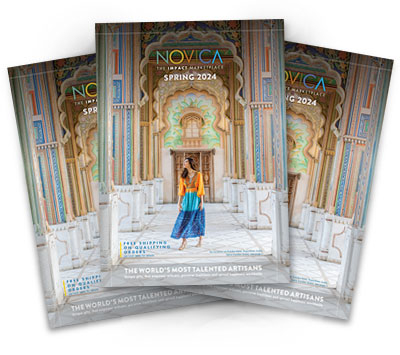

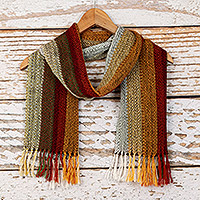
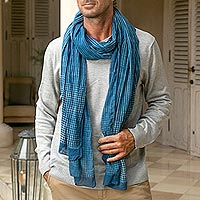 Bestseller
Bestseller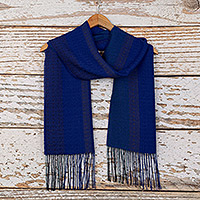
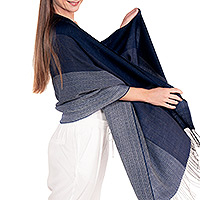 New Arrival
New Arrival